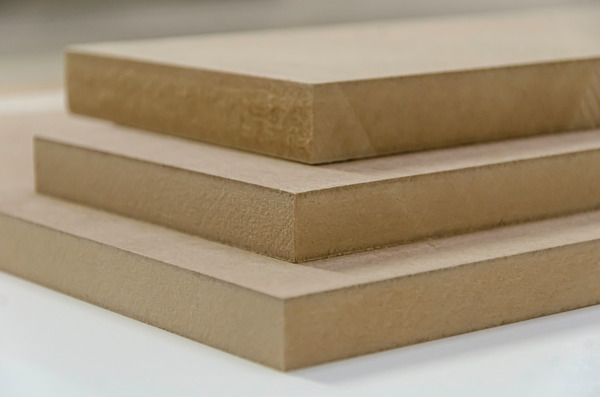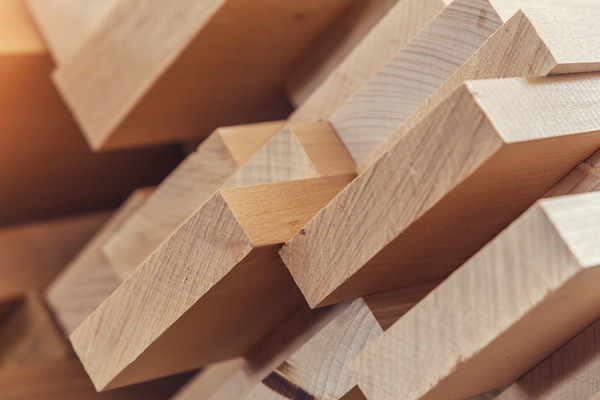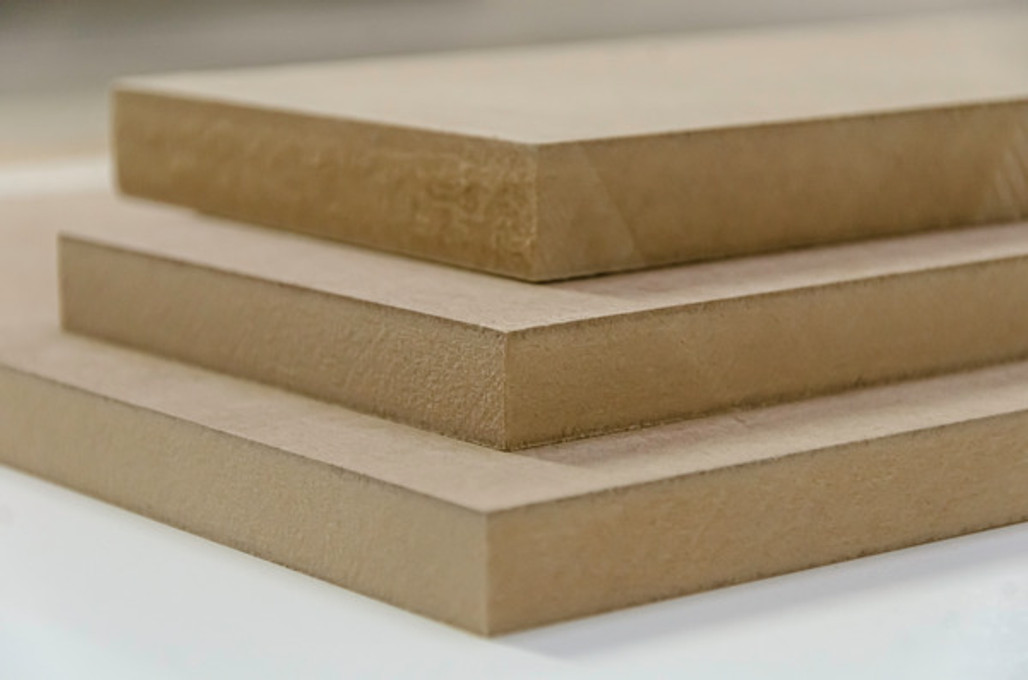
MDF Vs Wood For Skirting Boards | Comparison For British Homes
Posted by Sultan Khan on 25th Jul 2025
Choosing between wood and MDF for your skirting boards affects everything from your budget to long-term maintenance. Both materials work well in UK homes, but they suit different situations and come with distinct trade-offs worth understanding before you buy.
Note: We supply both materials covered in this guide. Our comparison focuses on real-world performance to help you choose what works best for your specific needs.
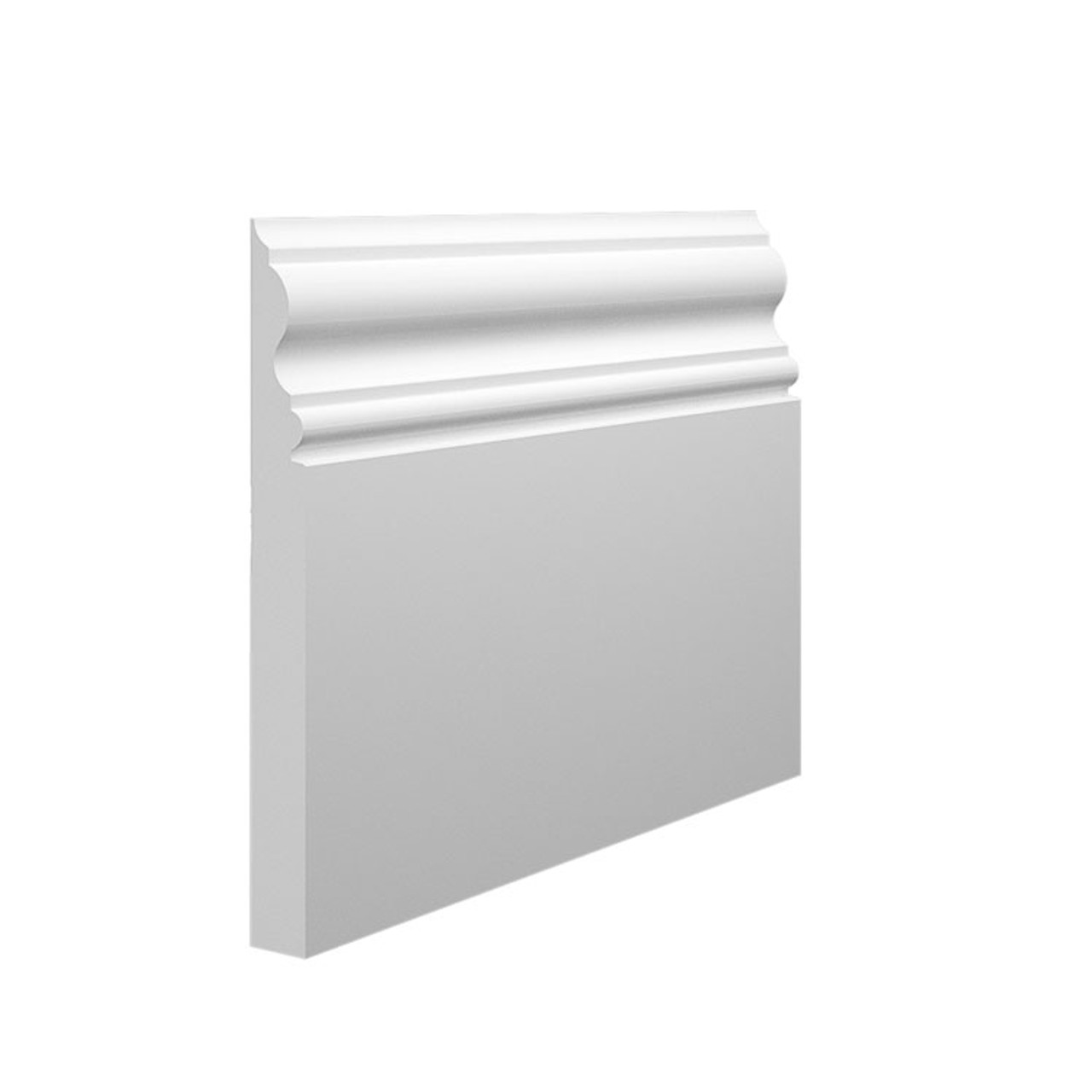
MDF Skirting
Uniform surface, consistent profile

Pine Skirting
Natural grain, traditional material
Materials explained
Wood and MDF skirting boards look similar once painted, but they're constructed differently and behave quite differently in your home.
Why pine became popular
Pine wasn't always the go-to choice for British homes. Before the 1700s, oak dominated interior woodwork, but the Royal Navy's demand for warship timber created scarcity that pushed prices beyond most homeowners' reach. Baltic pine became the affordable alternative, though today pine represents a smaller portion of skirting sales compared to MDF's dominance in the budget-conscious market.
Formaldehyde and indoor air quality
MDF contains formaldehyde-based resins used in the manufacturing process, which can emit small amounts of formaldehyde gas over time. Modern MDF products meet strict European emission standards (E1 classification), keeping emissions well below health concern levels.
Natural wood produces no formaldehyde emissions and actually helps regulate indoor humidity. However, wood finishes and paints can contain their own chemical compounds. Once properly sealed and painted, both materials are suitable for indoor use with minimal impact on air quality.
Pine vs oak skirting
When choosing wooden skirting, the species makes a huge difference in performance and appearance. Pine and oak are the two main types chosen for skirting, architrave and other interior trims in British properties.
Pine (Softwood)
Pine contains two distinct zones: the lighter sapwood (outer growth) and darker heartwood (core). Quality pine uses more heartwood, which provides better durability and fewer knots. The visible grain makes it ideal for stained finishes.
- More affordable than hardwoods
- Easy to work with and install
- Takes stain and paint well
- Some movement with humidity changes
Oak (Hardwood)
Oak provides the premium option with distinctive grain patterns and exceptional durability. Its natural tannins give it inherent decay resistance, making it the traditional choice for high-end installations and period properties.
- Superior durability and longevity
- Beautiful natural grain patterns
- Adds significant property value
- Higher cost but longer lifespan
Our high-quality MDF uses only softwood fibres which achieves higher density than standard MDF boards. This creates better stability and moisture resistance compared to cheaper alternatives that mix hardwood and softwood fibres.
High-density vs standard MDF
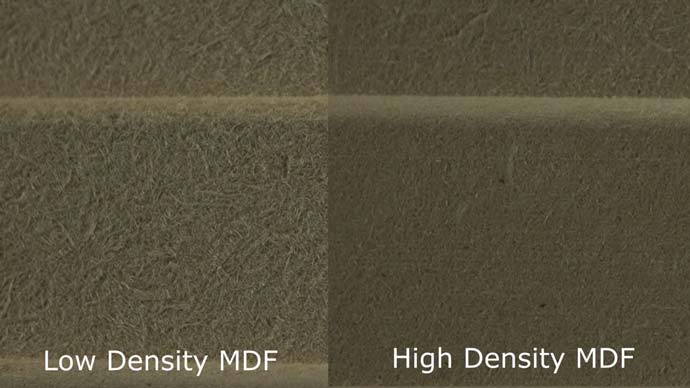
Density comparison: standard vs high-density MDF
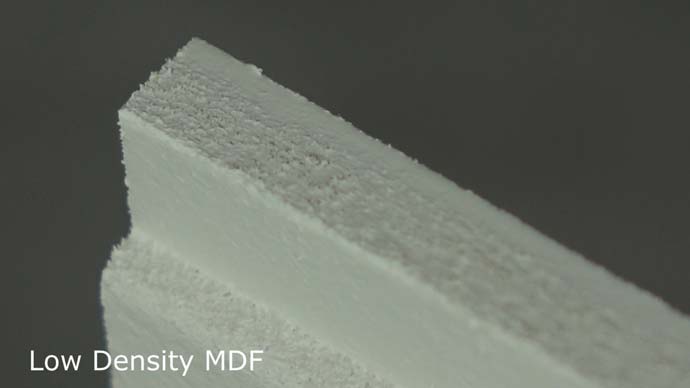
Standard MDF painted
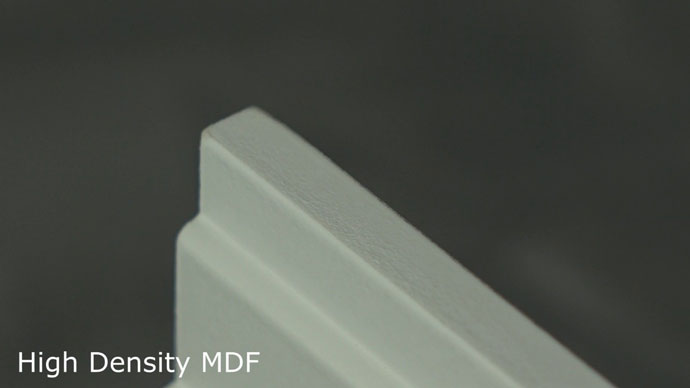
High-density MDF painted
Higher density MDF provides a smoother finish when painted, better edge definition, and improved moisture resistance compared to standard density alternatives.
Cost comparison
The price difference between MDF and wood skirting isn't just about the initial purchase. Installation time, finishing requirements, and long-term maintenance all affect the total cost.
| Cost Factor | MDF | Pine | Oak |
|---|---|---|---|
| Material cost per metre | £3.32 | £8.34 | £11.00 |
| Preparation time | Low | Medium | High |
| Paint preparation needed | Minimal | Moderate | Extensive |
| Long-term maintenance | Replace if damaged | Can sand & refinish | Can sand & refinish |
MDF often comes pre-primed or undercoated, which saves time during installation. Pine and oak typically arrive unfinished, requiring primer, undercoat, and topcoat application.
"I think I want to say MDF and possibly even HDF that Skirting World offer which is a slightly higher density and moisture resistant at just for added bonus."
— ashthekid, BuildHub forum
Calculate Your MDF Skirting Costs
Work out exactly how much MDF skirting you need and what it will cost for your project.
Use Our CalculatorDurability and maintenance
How your skirting boards hold up to daily life depends heavily on the material choice. Both have strengths, but they handle damage and wear differently.
Real-world performance
MDF typically performs well for 15-25 years in normal household conditions, while pine and oak can last several decades with proper maintenance. Wood has the advantage that you can refresh it with sanding and repainting, while MDF generally needs complete replacement if it becomes damaged.
Our lifetime guarantee on MDF skirting covers manufacturing defects for 25 years, reflecting our confidence in the material's long-term performance when properly installed and maintained.
"We went with HDF skirting in our new build. I did all of the carpentry and fitting; Jan the painting. In previous houses we used pine. I found HDF easier to work, fit and paint."
— TerryE, BuildHub forum
Common complaints about MDF
Some online discussions report MDF failures after 5-6 years, but these often involve extreme conditions or installation issues. Quality MDF performs excellently in normal household conditions - which is why we offer a 25-year guarantee on our MDF products.
The key is understanding that MDF thrives in stable environments with proper installation and sealing. While wood offers superior long-term repairability and adds more property value, MDF provides the affordable, durable alternative that most homeowners choose for excellent results.
"I'm not a fan tbh, as the vulnerable external mitres take a bash from hoovers etc and start to fray. Pine is much more robust imho, just a total PITA for prep / prime / paint."
— Nickfromwales, BuildHub forum
"I'm a big fan of MDF, well for skirting at least - hate it for anything else! Straight as anything and so easy to cut, prep, finish and fit. I've always bought from MDF Skirting World and found them really competitive price-wise and never had any issues with their free delivery service."
— MJNewton, BuildHub forum
Moisture and humidity
Moisture exposure is where the biggest differences between materials show up. UK homes deal with everything from bathroom steam to seasonal humidity changes, and your skirting boards need to cope.
Why Scottish homeowners always choose wood
Scotland shows significantly higher wood usage in construction (85% timber frame vs 9% in England), partly reflecting regional expertise in managing moisture-related challenges. Scotland's consistently damp climate and traditional building methods influence material choices, with many Scottish builders preferring wood's natural moisture handling properties over engineered alternatives.
High-density MDF with moisture-resistant properties handles humidity much better than standard MDF, but it's still not completely waterproof. Proper sealing of cut edges remains important.
| Scenario | MDF | Pine | Oak |
|---|---|---|---|
| Living room (normal humidity) | Good | Good | Excellent |
| Kitchen (moderate steam) | Good | Fair | Good |
| Bathroom (high humidity) | Fair* | Poor | Fair |
| Floor washing/spills | Poor | Good | Good |
*Moisture-resistant MDF performs better in bathrooms than standard MDF, but proper ventilation and sealing remain important.
"For min movement and stability it has to be HDF, when it come to scribing the internal corners it's horrible as it's so friable."
— SimplySimon, BuildHub forum
What happens when things go wrong
When MDF gets saturated with water, it swells and the fibres separate. This damage is usually permanent and requires replacement. Wood can often recover from moderate moisture exposure once it dries out, though it may need sanding and refinishing.
Installation differences
While the basic installation process is similar for both materials, there are practical differences that affect how easy the job is and how good the final result looks.
Working with MDF
Advantages
- Cuts cleanly with standard tools
- No grain direction to consider
- Often comes pre-primed
- Uniform density for consistent screw holding
Considerations
- Creates fine dust when cutting
- Cut edges need sealing
- Heavier than equivalent pine boards
Working with Wood
Advantages
- Lighter weight for handling
- Natural moisture resistance
- Can be reshaped if needed
- Pleasant to work with
Considerations
- Knots can cause tear-out when cutting
- Grain direction affects splitting
- Usually requires more painting preparation
Painting and finishing
MDF takes paint extremely well because of its uniform surface. You get consistent coverage without worrying about grain showing through or knots bleeding through the paint.
Wood requires more preparation time. Pine needs primer with stain blocker to prevent knots from showing through, and you may need extra coats to achieve an even finish. However, if you want a natural wood finish with stain or varnish, only real wood gives you that option.
Which should you choose?
The choice between MDF and wood depends on your specific situation. Here's how to think through the decision based on what matters most for your project.
✓ Choose MDF if:
- You're painting the skirting boards
- Budget is a primary concern
- You want the quickest installation
- The room has normal humidity levels
- You prefer a completely uniform appearance
- You're unlikely to want to change finishes later
✓ Choose wood if:
- You want natural wood grain visible
- Long-term value is important
- You may want to refinish in future
- The installation area gets floor splashes
- You're matching existing wooden features
- You prefer traditional materials
Mixed approach
Some homeowners use MDF in low-risk areas like living rooms and bedrooms for cost savings, then choose wood for kitchens, hallways, and other areas where durability or moisture resistance matters more.
"Got to be real wood for me. When we renovated the first floor I used all Howdens MDF stuff. It looked good for a while but now looks awful and by the time I got to the extension and ground floor I had converted to pine. I literally hate it!"
— Carrerahill, BuildHub forum
Room-by-room recommendations
| Room Type | First Choice | Reasoning |
|---|---|---|
| Living room | MDF | Low moisture, usually painted, cost-effective |
| Kitchen | Wood | Floor splashes, steam exposure, frequent cleaning |
| Bathroom | Wood | High humidity, water splashes (or consider PVC) |
| Bedroom | MDF | Controlled environment, usually painted |
| Hallway | Wood | High traffic, potential impacts, cleaning |
Choosing MDF or Wood
For most UK homes, MDF skirting boards offer the best combination of cost, appearance, and performance. They work well in the majority of rooms and give you a professional painted finish without the preparation time wood requires.
MDF skirting sometimes gets a bad reputation for being 'cheap', however in the right conditions and maintenance, it performs better than more expensive materials.
Wood makes sense when you want natural grain visible, need maximum durability in high-wear areas, or you're working in rooms where moisture is a concern. The higher cost is justified when these factors matter for your specific situation, and oak provides the premium option for those prioritising long-term value and traditional character.
Quick Decision Guide
Budget-Conscious Choice
Choose MDF if you want to paint your skirting boards, the underlying surface will not be visible and a good paint for MDF will protect them for decades.
Natural Beauty
Choose Pine if your home has high moisture or humidity, or if you want the natural wooden grain aesthetic.
Premium Investment
Choose Oak if you want the most premium material, with the best performance across all categories, and longevity across generations, it also adds a bump in real estate value to your property, and can be repurposed, resold or refinished many times over.








